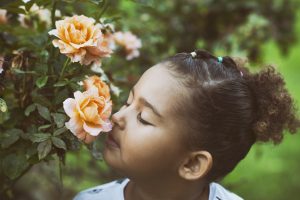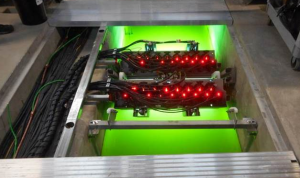Submitted by WET Science Center
Explore with your five senses this week as we experience the world around us through sensory activities. Find the fun at our Rediscovering Science website, or pick up a printed activity packet from the WET Science Center Tuesday or Thursday 1:00 p.m. – 5:00 p.m., at 500 Adams St NE, Olympia.

All activities are easy to follow with materials already in your home! You can:
- Map your taste buds.
- Test your sight.
- Use sound to visualize your environment.
- Experience water in 5 ways with our featured activity.
Help us join in on your science fun by sending photos of any activities you do to our email.
Sensing the World
Which of your five senses would you use to identify a rose? Probably not taste and sound. Our five senses have different strengths and applications. They all work together to explain the world and help us communicate.
Each sense has an organ functioning as the receptor of an experience. Humans have ears for hearing sound, eyes for seeing light, a tongue for tasting, a nose for smelling, and skin for feeling touch and temperature. When people lack a sense, like sight or hearing, strengthening their other senses becomes critical for interpreting their environment.
Other animals have different organs and senses for things like infrared radiation, ultraviolet light, and magnetic and electric fields. Some have super sense, like African Elephants with the strongest sense of smell in the animal kingdom. Different organisms have senses that uniquely evolved to their environment. Learn about the many animal senses in this info table by the University of Washington.
Senses and Sensors at the Wastewater Treatment Plant

You can think of senses as a system with a sensor that sends information to a processing center for interpretation. Sensors throughout LOTT Clean Water Alliance’s wastewater treatment facility send information about the wastewater to machines and computers. This is similar to how we use our eyes, ears, nose, tongue, and skin to send information about the world around us to our brains.
For example, sensors in LOTT’s ultraviolet (UV) light treatment tanks detect the amount of particles in water, a measurement called turbidity. The turbidity reading from the water informs the system of how intense the UV lights must be to disinfect the water while also saving electricity. After the UV light treatment, the water is clean and safe to release into the Puget Sound.
As you probably imagine, wastewater is smelly. Since LOTT is located in downtown Olympia, they have a system in place to minimize the odor of wastewater before it reaches the outside air. This system transports indoor air through odor scrubbers, where the air is treated by neutralizing bad scents. This way, people who love downtown Olympia can enjoy it without their sense of smell interrupting their visit.
What will you discover about yourself and your environment as you sniff, taste, touch, hear, and see the world with us through Rediscovering Science?



















































